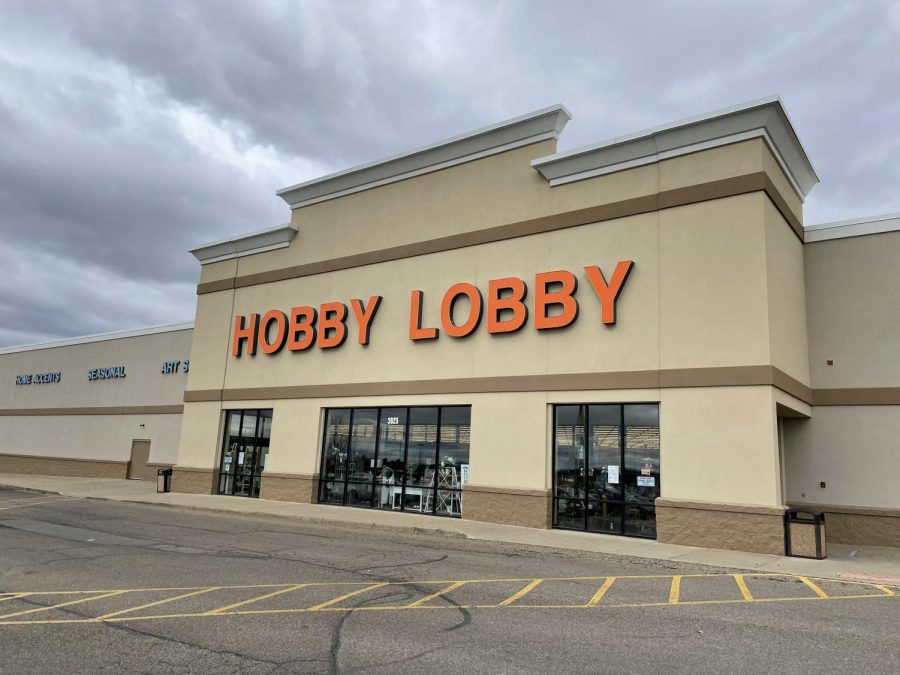Hobby Lobby to soon close current store as new site nears completion, opens soon
March 26, 2021
A local Zanesville retailer will soon be moving to a new location after nearly a year of planning and construction.
Hobby Lobby, an American arts and crafts store, will close its current location the first weekend in April and open the doors at its new site the following week.
The move, roughly a mile south along Maple Avenue, was likely due to rising rents, but company officials wouldn’t officially confirm.
The upcoming relocation was first published last summer by Y-City News when it was discovered the company was planning and in the early construction phases of developing its new location.
While marketing material posted online by TLM Realty stated the store would be open by ‘fall 2020,” the pandemic delayed those projections with a media official saying last year that the company intended to open by early April 2021.
The store will be located in a retail center nestled near the Colony Square Mall, adjacent to Big Lots.
TLM Realty, which owns the site, also owns another shopping center location in Solon, Ohio which underwent redevelopment in 2019. That location has Hobby Lobby as a tenant as well.
Both the Zanesville and Solon locations were former Kmart sites.
According to a media representative with the company, the current location will close on Saturday, April 3.
The new site, located at 3507 North Maple Avenue, will have a ‘soft’ opening late the following week.
The official grand opening is scheduled for April 12, but no event or special discounts are currently planned to coincide with its opening.
The move places the Northpointe Center, which is owned by the Zaremba Group, in a dire financial situation.
Using a document found on Zaremba’s website from 2018, which shows a layout of the site, we were able to determine each store’s corresponding square footage.
Using those figures we were able to calculate what the center’s occupancy rate would be after Hobby Lobby leaves early next month, a concerning 34 percent.
Note: The Kohl’s, the Home Depot and Pizza Cottage locations are not owned by the Zaremba Group and thus not included in this calculation.
The only other store to leave in the previous year was the Zanesville Times Recorder, which had its local newsroom located on retail space G1 since 2015, when it moved from its historic downtown Zanesville building.
For reference, Hobby Lobby’s current location makes up nearly 30 percent of total owned square footage, something investors often refer to as an anchor tenant.
In many lease contracts, which consists of tens of thousands of dollars in monthly rent payments, if not hundreds of thousands, should an anchor tenant of that size leave, contracts can be renegotiated or certain dormant lease clauses triggered.
As The New York Times reported last summer, shopping centers and malls were already headed towards financial collapse in the years following the Great Recession.
When the pandemic struck the United States in March 2020, it is believed to have become the final catalyst that many experts say has sent those properties into an unrecoverable downward death spiral.
When many retail stores were forced to be closed by their respective state governments, the stores, in turn, refused to pay rent, citing government intervention.
While an exact outstanding national commercial rent amount is not publically known, it was substantial enough last year to force financial institutions to restructure their agreements, something that was previously very rare.
Like many large financial purchases, such as buying a home, where the mortgage, which is issued by a local bank, is later sold up the financial stream and packaged into securities, so are many individual commercial properties.
Traditional, due to their size, complexity and need for asset valuation by its firm’s financial backing bank, property holders were unable to lower rents even if it meant a growing number of empty retail spaces.
For a property owner, valuations often come in large part based upon set rental rates, even if those rates leave a property vacant for years if not decades.
This explains the phenomenon where a property owner would rather not renew a commercial lease at the same rate and instead drastically increase the monthly payment forcing the tenant to leave and the property to sit dormant.
That is because the property owner, which is often actually a large number of investors, can then go back to their financial institution and demand a higher valuation, which in turn provides additional capital for new investments or projects, even if the underlying asset hasn’t truly, in the traditional sense, increased in value.
Manhattan is a perfect, but extreme, example of this situation where even before the pandemic, first-floor storefront locations would sit vacant because only loss-leader flagship establishments were able to afford the going rental rates.
This often leads to the rare and seemingly illogical stories where owners will let a tenant operate out of one of their retail locations for no rent on a short-term basis to make a property seem more occupied than it truly is.
That is because if they were to offer a discounted rate to get a tenant secured, then the site’s valuation would decrease, which is not just undesirable but often prohibited in larger commercial financial securities agreements.
According to Moody’s, occupancy rates have hit their highest levels in over 20 years, a sign of a shifting U.S. economy caused by less and less demand for commercial retail space.
Ultimately, as demand falls for these types of properties those companies looking to maintaining their physical storefront presence have an ever-increasing slate of choices when their contracts expire.
This gives them a large advantage in bargaining for lower rents over what they are currently paying at their present site, for those property owners willing or able to negotiate.
The situation also calls into question municipal agreements made to these large developers for tax abatements over the past decades which promised increased sales tax revenue and employment.
Many shoppers now choose to have everything from fast food to groceries ordered online and delivered to their door, which has upended the traditional shopping experience.
As for what will become of many ever-increasing vacant properties, only time will tell if those sites are redeveloped and blossom into desirable destinations or fall into disrepair as owners are able to pull less and less money yearly from their properties.
A request for comment by the Zaremba Group was not returned.

















